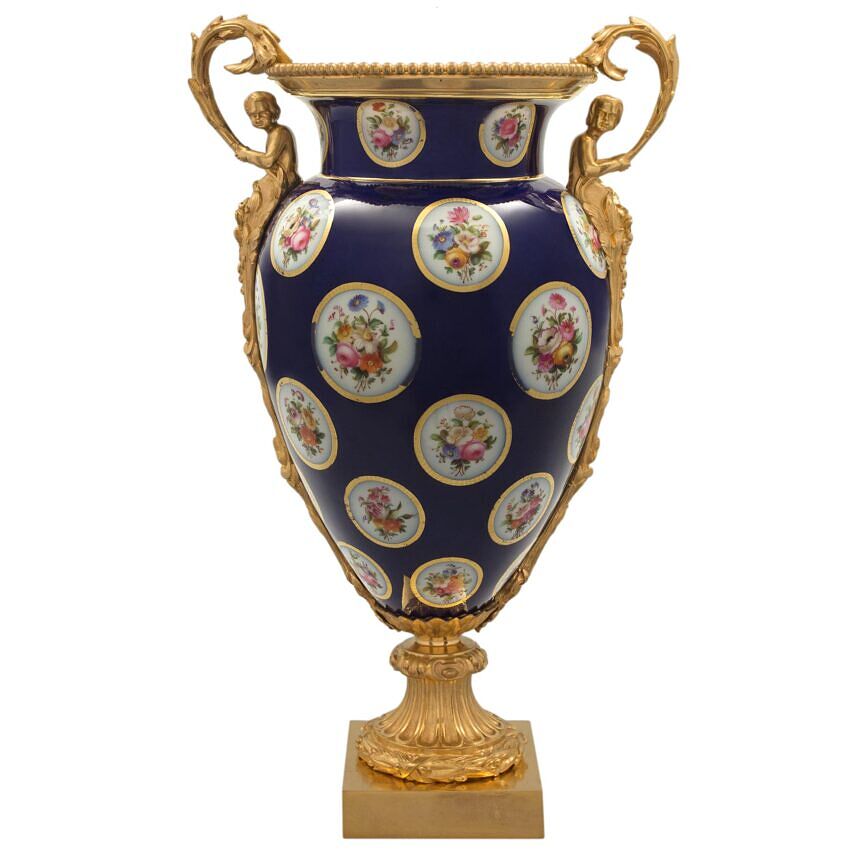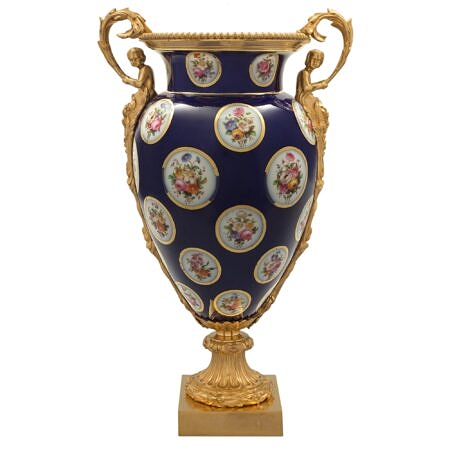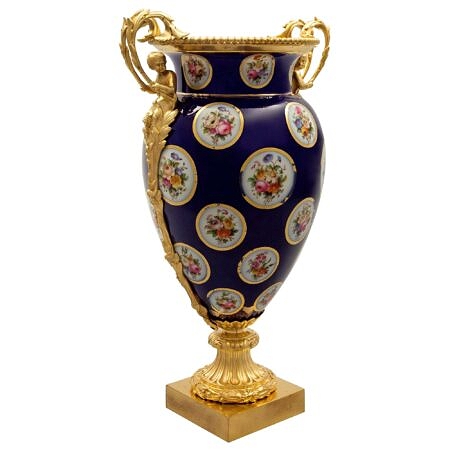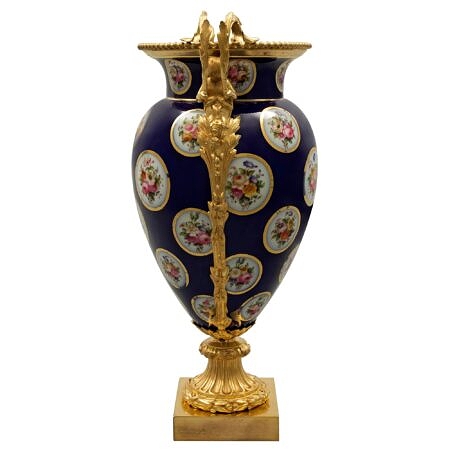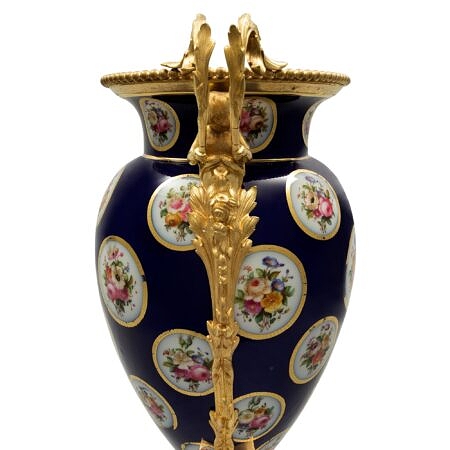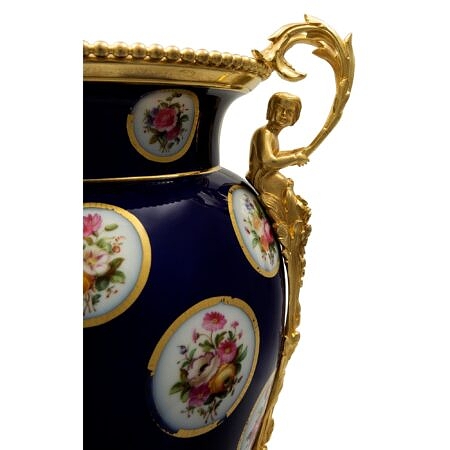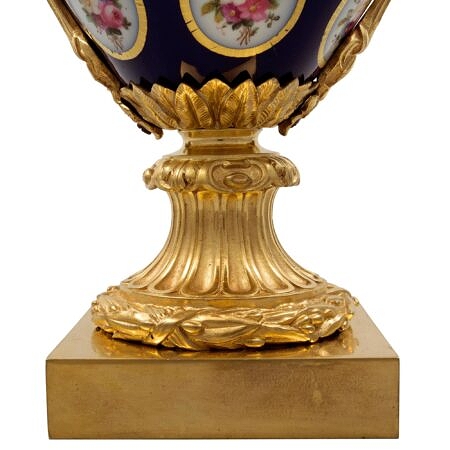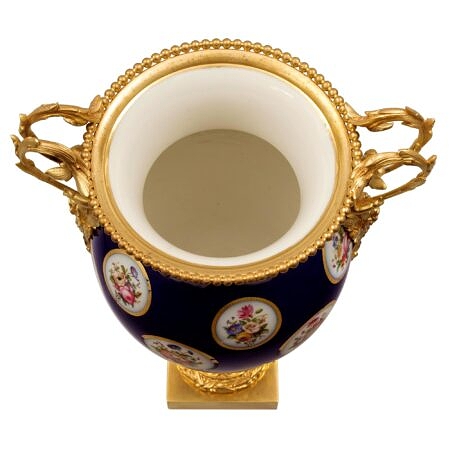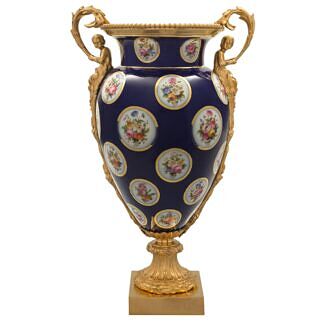A French 19th century Louis XVI st. porcelain and ormolu vase, attributed to Sèvres
List: $6,900.00
An elegant French 19th century Louis XVI st. porcelain and ormolu vase, attributed to Sèvres. The lovely vase is raised on a square ormolu base below the foliate designed ormolu socle pedestal support. The cobalt blue porcelain body is decorated... — Read More
An elegant French 19th century Louis XVI st. porcelain and ormolu vase, attributed to Sèvres. The lovely vase is raised on a square ormolu base below the foliate designed ormolu socle pedestal support. The cobalt blue porcelain body is decorated with medallions of beautiful and richly colored floral bouquets within circular gilt borders. Ormolu foliate designed handles continue down each side topped by a charming cherub that is holding up scrolled acanthus leaves above. The handles are joined by an ormolu top border with beaded trim. — Read Less
- Item # 9194
-
H: 16 in L: 10.25 in D: 7 in
H: 41 cm L: 26 cm D: 18 cm
- France
- 19th Century
- Ormolu, Porcelain
- Louis XVI st. Read More
- Sèvres Read More
It was founded through the support of King Louis XV of France and at the initiative of Madame Pompadour to be located near her Château.
Due to Sèvres’ reputation for excellence and prestige, it has always attracted some of the best artists throughout history; François Boucher, Albert-Ernest Carrier-Belleuse, Étienne Maurice Falconet, Alexandre Fragonard and August Rodin, just to name a few. Many of these artworks can be seen at the Louvre Museum and the Musée National de Céramique in France.
Initially, Sèvres created a soft paste porcelain know as Biscuit de Sèvres. In 1768 the Bordeaux chemist Villaris and Jean Baptiste Darnet discovered deposits of Kaolin on French soil. In 1771 the Royal Academy sent a report on the creation of hard paste porcelain at which time Sèvres began manufacturing hard paste porcelain.
Louis-Simon Boizot (1743–1809) was a French sculptor renowned for creating Biscuit de Sèvres models, and was the director at Sèvres from 1774-1800, followed by Alexandre Brogniart(1800-1847) and Henri Victor Regnault in 1854.


